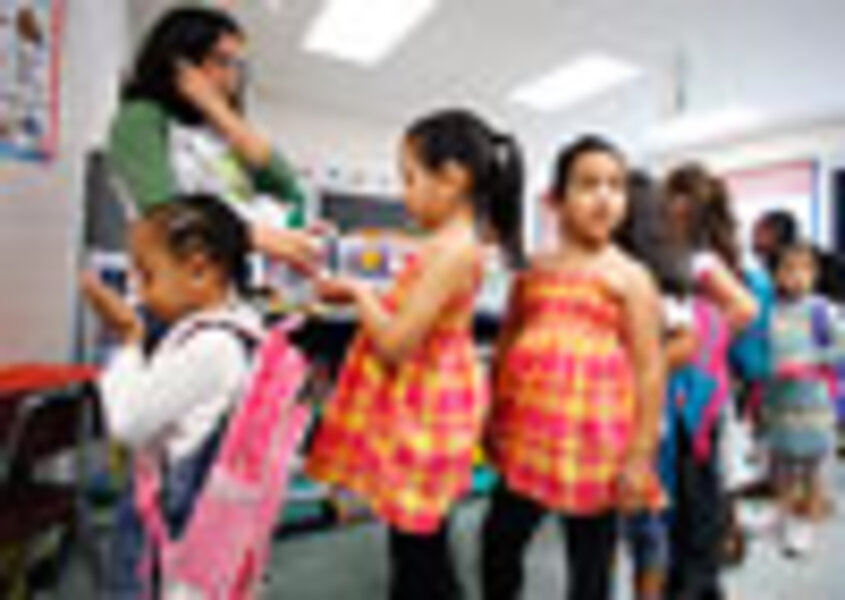Schools say no knee-jerk flu closures this fall
Loading...
| Boston
Schools have been busy preparing for possible outbreaks of the H1N1 flu, but any kids expecting the principal to give everyone a week off at the slightest hint of illness among students or staff should think again.
Government and school officials have had time to reflect on what happened last spring, when more than 700 schools closed in response to cases of the new strain of flu. The federal Centers for Disease Control and Prevention is urging a host of preventive measures for schools. But unless so many students and staff are ill that it's not possible to operate, its current guidance is for schools to carefully weigh potential negative consequences before shutting down – such as students being home alone or healthcare workers missing shifts because they have to watch their kids. (If guidance changes it will be updated here.
Secretary of Education Arne Duncan also announced guidelines and support this week to help schools offer online lessons or take-home packets for students who have to be out of school.
"[School leaders] are certainly not panicked; they're concerned, and they're eager to be prepared," says Karen Lewis, who works on school health issues with the National School Boards Association (NSBA). "It's very hard to predict how severe this will be."
In many communities, people may find their schools doubling as vaccination sites later this fall. A recent NSBA survey found that three-quarters of the 485 respondents would be willing to host vaccinations in their school buildings. The majority hadn't seen such a scenario in the past five years, and some raised concerns about liability, but most expected to work with state and local health officials as they considered such plans.
The federal government is testing the vaccine and expects initial doses to be available to states by mid-October.
In Boston, health officials are campaigning first to maximize the number of people who get seasonal flu vaccine, through expanded hours at community health clinics and hospitals. They hope to use that same system once the H1N1 vaccine is available, but if the medical system is strained by widespread illness, the quickest way to immunize people would likely include school-based vaccinations, says Barbara Ferrer, director of the Boston Public Health Commission.
A pilot program for seasonal flu vaccines at a large Boston school didn't get a very good response rate last fall, Ms. Ferrer says. Only 200 of 1,700 students brought back the necessary consent from parents. So a lot of outreach would be necessary "to make sure parents know and approve that a child is getting vaccinated," she says.
An AP-GfK poll in July found that 63 percent of parents would be likely to give permission for their child to have the new shot at school.
Kids and parents will notice more posters this fall encouraging frequent hand-washing and covering coughs and sneezes. Parents are also being reminded to be ready to keep children with flu-like symptoms home until 24 hours after they no longer have a fever.
"Some of the most effective things we can do to prevent the spread of this or any disease are also some of the least glamorous," Ms. Lewis says.
One practice schools are implementing to prevent the spread of flu is known as "social distancing." A recent trend toward clustering desks together in classrooms, for instance, may give way to traditional rows with lots of space in between. School assemblies may be canceled if students have been getting ill.
And schools should designate an isolated area where students showing symptoms will have to wait until they go home. Last spring, nurses' offices were sometimes overwhelmed with these children, raising concerns that people seeing the nurse for other reasons could be exposed to the new flu, Ms. Ferrer says. "It's not meant to be draconian, but it is meant to make sure everyone is prepared ... at the point we start seeing clusters of illness, to take those measures," she says.





